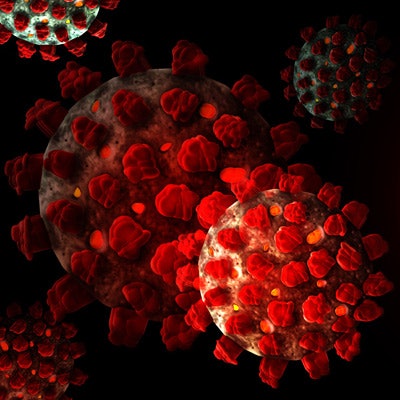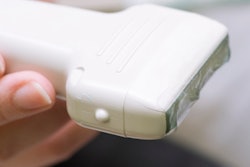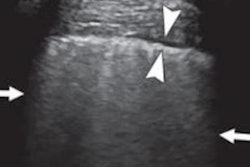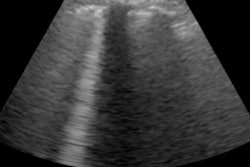
Point-of-care ultrasound (POCUS) can be used to image the lungs, hearts, and veins of patients with COVID-19, according to the experiences of front-line personnel that were summarized in a commentary published on April 29 in Academic Emergency Medicine.
The commentary was based on the shared findings of a March webinar presentation by nine emergency physicians helping COVID-19 patients around the world. During the webinar, the experts shared their thoughts on ultrasound's unique advantages and why it may be better in certain instances than other imaging modalities.
"Point-of-care ultrasound represents an attractive imaging modality in COVID-19, as it involves portable technology without radiation," wrote the authors, led by Dr. Rachel Liu from the department of emergency medicine at Yale School of Medicine.
Ultrasound compared with CT, chest x-ray
So far, CT has been considered the gold standard of COVID-19 chest imaging -- and for good reason. It is incredibly sensitive for detecting lung abnormalities, and it may even be a more reliable indicator of infection than rapid tests, according to the authors. However, CT poses its own set of challenges, including that rooms must be properly cleaned after servicing a patient with COVID-19, which could render the machines unusable for hours.
Chest radiography is another popular imaging method for patients with COVID-19. Like ultrasound, it can be portable and used to both diagnose and monitor patients with the novel coronavirus. But some early research suggests chest x-ray may also not always align with CT findings.
The emergency physicians instead noted that POCUS can overcome some of the limitations of both CT and chest radiographs. Early research shows the findings on lung ultrasound scans align well with CT scans.
In addition, point-of-care systems come in highly portable forms, with newer systems powered by tablets and smartphones. The portability and advanced technology make it possible for clinicians to remotely view ultrasound scans, sometimes in real-time, as well as make infection control even easier.
"It is feasible for the screen to be completely encased in a covering such as a Ziploc bag, and for transducers to be fully enclosed using sheaths," the authors wrote. "They may be particularly useful in situations where separate care or triage areas for cohorted COVID-19 patients are established outside the main areas where traditional machines reside."
Ultrasound for cardiac, vascular imaging
But what really separates POCUS from other modalities is its ability to quickly and easily visualize not only the lungs but also the heart and veins.
Cardiac imaging is becoming increasingly important following preliminary reports that some patients with COVID-19 experience cardiac dysfunction. The experts recommended that clinicians include cardiac ultrasound when working up critically ill patients with confirmed or suspected cases of COVID-19.
The panelists used a variety of views when performing cardiac POCUS scans, including the parasternal long- and short-axis views, apical 4-chamber view, subxiphoid view, and subxiphoid long-axis view. Findings from patients with COVID-19 included the following:
- Pericardial effusion
- Depressed ejection fracture or gross left ventricle dysfunction
- Right ventricular enlargement and evidence of strain
- Hypovolemia or hypervolemia
Ultrasound can also be used for vascular imaging in critically ill patients. The experts used ultrasound to help diagnose deep venous thrombosis as well as perform ultrasound-guided procedures to establish peripheral or central venous access or arterial lines.
However, the precise best use of ultrasound for patients with COVID-19 will depend on the resources and expertise available, the authors noted.
"Incorporating ultrasound into the evaluation of COVID-19 patients will depend upon available resources, expertise of personnel, and logistic configurations unique to each situation," the authors wrote. "Further research and data are needed to determine the role of ultrasound as a screening tool for establishing both admission thresholds and level of care, its use in prognostication and monitoring of inpatients, as well as novel uses like home telemonitoring in discharged patients."



















